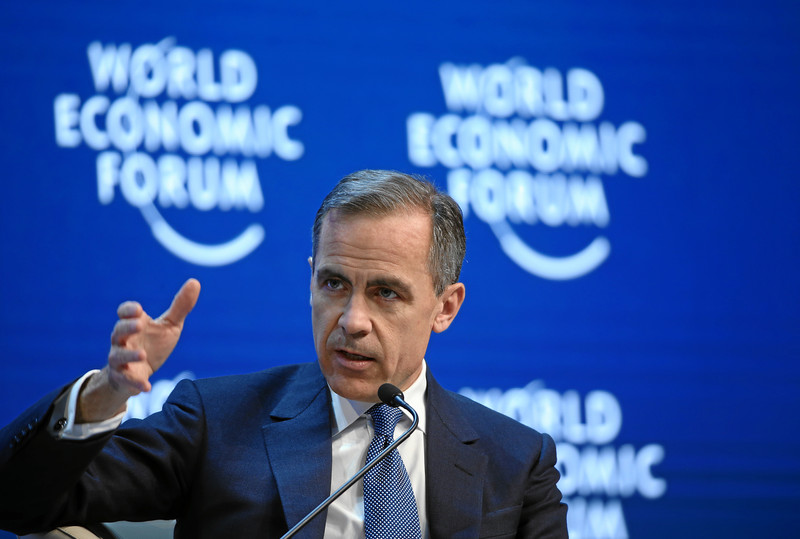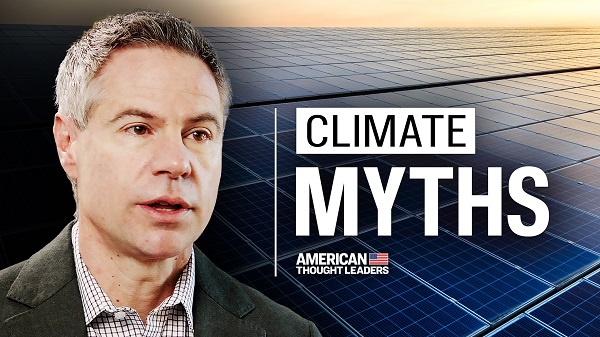Economy
‘What constitutes a border crisis?’ Sanctuary cities have found out

Migrants and migrant bedding inside O’Hare International Airport in Chicago.
From The Center Square
By Tom Gantert
Yeah, you liked them when it wasn’t your problem because you’re not a border state. And then when they show up in Chicago and New York, you’re like ‘What the [expletive] are we going to do with these people?’”
In March 2021, the Los Angeles Times published a story with a headline that asked, “What constitutes a border crisis?”
The story quoted then House Republican Leader Kevin McCarthy as saying, “There is no other way to claim it than a Biden border crisis.”
Then the LA Times asked, “But is it a crisis?”
Just a month later in April 2021, New York City Mayor Bill de Blasio released a statement about his city being a sanctuary city.
“New York City is proud to be a welcoming and inclusive city for immigrants,” de Blasio said at the time.
The debate in the U.S. on migrants took off in April 2022 when Texas Gov. Greg Abbott decided to take a stand against President Joe Biden and what Abbott called an open border policy.
Abbott stated that Biden’s repeal of Title 42 – a pandemic-era policy that allowed the government to quickly expel arriving asylum seekers – had created an “unprecedented surge of illegal aliens” into the country with as many as 18,000 apprehensions a day.
Abbott said that Texas border towns were being overrun by migrants and were overwhelmed. His solution was to bus many of the arriving migrants to sanctuary cities across the U.S.
In August 2022, when the first bus of migrants leaving Texas arrived in New York, Abbott was clear why he had his state paid for the trip. New York had a new mayor by then.
“New York City is the ideal destination for these migrants, who can receive the abundance of city services and housing that Mayor Eric Adams has boasted about within the sanctuary city,” Abbott stated in a news release. “I hope he follows through on his promise of welcoming all migrants with open arms so that our overrun and overwhelmed border towns can find relief.”
And just over a year later, New York Gov. Kathleen Hochul was on CNN in September 2023 pleading with immigrants to “go somewhere else.”
How it has played out was not lost on liberal comedian Bill Maher.
“Could everyone just stop the posturing?” Maher said on a July 2023 podcast with Sharon Osbourne. “Don’t pretend that you love migrants so much and then when we send them to you, you don’t like them. You know? You’re full of [expletive]. And we can see that. Yeah, you liked them when it wasn’t your problem because you’re not a border state. And then when they show up in Chicago and New York, you’re like ‘What the [expletive] are we going to do with these people?’”
New York wasn’t the only destination for Abbott’s buses. He also targeted other sanctuary cities, such as Washington, D.C, Chicago and Denver.
The New York Times published an article in July 2023 that had a headline that asked, “Is Texas’ Busing Responsible for the Migrant Crisis Across Cities?”
On June 14, Abbott’s office stated that it had bused 119,200 migrants to six sanctuary cities since August 2022. That included 45,700 migrants to New York City and 36,900 migrants to Chicago since August 2022. There were also 19,200 migrants bused to Denver since May 2023 and 12,500 migrants bused to Washington D.C. since April 2022.
But Abbott wasn’t alone in busing migrants from the border to locations throughout the country. The Democratic-run city of El Paso also bused migrants north.
Democratic Arizona Gov. Katie Hobbs stated in September 2023 that Arizona was “overwhelmed” by the flow of migrants into her state. Arizona spent $10.5 million transporting 10,247 migrants out of state as of September 2023.
That’s just part of a bigger surge of migrants into the U.S. Since Biden took office in January 2021, about 12 million illegal border crossings have been documented, according to U.S. Customs and Border Protection data and a compilation of “gotaway” data obtained from border agents by The Center Square. Gotaways is the official CBP term to describe those who illegally crossed the border between ports of entry but who were not apprehended. CBP does not publicly release “gotaway” data.
The increase in migrants has hammered the budgets of sanctuary cities.
Washington, D.C. created an Office of Migrant Services with an initial start-up cost of $10 million in 2022. In 2025, the city budgeted $39 million for that office.
Chicago has spent $299 million on migrants since 2022, according to a March 2024 report by the Illinois Policy Institute, and that does not include the hundreds of millions of dollars state taxpayers have paid for costs such as migrant health care.
New York City Mayor Adams said in August 2023 the migrant crisis may cost his city $12 billion over three years.
The city of Denver stated in April 2024 that the increase in migrants has cost it $63 million.
The cost to taxpayers in the state of Texas was $13.4 billion in 2023, according to the Federation For American Immigration Reform. Only California had a higher cost at $30.9 billion.
Ira Mehlman, spokesman for the Federation For American Immigration Reform, said Abbott’s busing strategy has worked.
“His busing policy exposed the hypocrisy of many sanctuary jurisdiction politicians who extolled the virtues of mass immigration regardless of its legality, but are not so happy when they actually have to deal with the real impact of large numbers of migrants,” Mehlman said in an email to The Center Square. “So long as it was someone else’s problem, they were happy to virtue signal and criticize others. Once it became their problem, they demanded that Abbott and others stop sending them migrants. For years, these sanctuary proponents claimed that illegal aliens were a benefit to the country, but are now demanding federal assistance to manage to cover their costs, exposing the fact that illegal immigration imposes huge fiscal costs.”
Tom Gantert
Managing Editor
Alberta
How economic corridors could shape a stronger Canadian future

Ship containers are stacked at the Panama Canal Balboa port in Panama City, Saturday, Sept. 20, 2025. The Panama Canals is one of the most significant trade infrastructure projects ever built. CP Images photo
From the Canadian Energy Centre
Q&A with Gary Mar, CEO of the Canada West Foundation
Building a stronger Canadian economy depends as much on how we move goods as on what we produce.
Gary Mar, CEO of the Canada West Foundation, says economic corridors — the networks that connect producers, ports and markets — are central to the nation-building projects Canada hopes to realize.
He spoke with CEC about how these corridors work and what needs to change to make more of them a reality.
CEC: What is an economic corridor, and how does it function?
Gary Mar: An economic corridor is a major artery connecting economic actors within a larger system.
Consider the road, rail and pipeline infrastructure connecting B.C. to the rest of Western Canada. This infrastructure is an important economic corridor facilitating the movement of goods, services and people within the country, but it’s also part of the economic corridor connecting western producers and Asian markets.
Economic corridors primarily consist of physical infrastructure and often combine different modes of transportation and facilities to assist the movement of many kinds of goods.
They also include social infrastructure such as policies that facilitate the easy movement of goods like trade agreements and standardized truck weights.
The fundamental purpose of an economic corridor is to make it easier to transport goods. Ultimately, if you can’t move it, you can’t sell it. And if you can’t sell it, you can’t grow your economy.
CEC: Which resources make the strongest case for transport through economic corridors, and why?
Gary Mar: Economic corridors usually move many different types of goods.
Bulk commodities are particularly dependent on economic corridors because of the large volumes that need to be transported.
Some of Canada’s most valuable commodities include oil and gas, agricultural commodities such as wheat and canola, and minerals such as potash.
CEC: How are the benefits of an economic corridor measured?
Gary Mar: The benefits of economic corridors are often measured via trade flows.
For example, the upcoming Roberts Bank Terminal 2 in the Port of Vancouver will increase container trade capacity on Canada’s west coast by more than 30 per cent, enabling the trade of $100 billion in goods annually, primarily to Asian markets.
Corridors can also help make Canadian goods more competitive, increasing profits and market share across numerous industries. Corridors can also decrease the costs of imported goods for Canadian consumers.
For example, after the completion of the Trans Mountain Expansion in May 2024 the price differential between Western Canada Select and West Texas Intermediate narrowed by about US$8 per barrel in part due to increased competition for Canadian oil.
This boosted total industry profits by about 10 per cent, and increased corporate tax revenues to provincial and federal governments by about $3 billion in the pipeline’s first year of operation.
CEC: Where are the most successful examples of these around the world?
Gary Mar: That depends how you define success. The economic corridors transporting the highest value of goods are those used by global superpowers, such as the NAFTA highway that facilitates trade across Canada, the United States and Mexico.
The Suez and Panama canals are two of the most significant trade infrastructure projects ever built, facilitating 12 per cent and five per cent of global trade, respectively. Their success is based on their unique geography.
Canada’s Asia-Pacific Gateway, a coordinated system of ports, rail lines, roads, and border crossings, primarily in B.C., was a highly successful initiative that contributed to a 48 per cent increase in merchandise trade with Asia from $44 million in 2006 to $65 million in 2015.
China’s Belt and Road initiative to develop trade infrastructure in other countries is already transforming global trade. But the project is as much about extending Chinese influence as it is about delivering economic returns.

Piles of coal awaiting export and gantry cranes used to load and unload containers onto and from cargo ships are seen at Deltaport, in Tsawwassen, B.C., on Monday, September 9, 2024. CP Images photo
CEC: What would need to change in Canada in terms of legislation or regulation to make more economic corridors a reality?
Gary Mar: A major regulatory component of economic corridors is eliminating trade barriers.
The federal Free Trade and Labour Mobility in Canada Act is a good start, but more needs to be done at the provincial level to facilitate more internal trade.
Other barriers require coordinated regulatory action, such as harmonizing weight restrictions and road bans to streamline trucking.
By taking a systems-level perspective – convening a national forum where Canadian governments consistently engage on supply chains and trade corridors – we can identify bottlenecks and friction points in our existing transportation networks, and which investments would deliver the greatest return on investment.
Business
Carney and other world leaders should recognize world’s dependence on fossil fuels

From the Fraser Institute
By Julio Mejía and Elmira Aliakbari
Simply put, despite trillions invested in the energy transition, the world is more dependent on fossil fuels today than when the United Nations launched its first COP. No wonder that ahead of COP30, leading voices of the net-zero-by-2050 agenda, including Bill Gates, are acknowledging both the vital role of fossil fuels on the planet and the failure of efforts to cut them.
On the heels of his first federal budget, which promises more spending to promote a “green economy,” Prime Minister Carney will soon fly to Brazil for COP30, the 30th United Nations climate summit. Like the former Trudeau government, the Carney government has pledged to achieve “net-zero” emissions in Canada—and compel other countries to pursue net-zero—by 2050. To achieve a net-zero world, it’s necessary to phase out fossil fuels—oil, natural gas, coal—or offset their CO2 emissions with technologies such as “carbon capture” or large-scale tree planting.
But after trillions of dollars spent in pursuit of that goal, it appears more unrealistic than ever. It’s time for world leaders, including Canada’s policymakers, to face reality and be honest about the costly commitments they make on behalf of their citizens.
For starters, carbon capture—the process of trapping and storing carbon dioxide so it’s unable to affect the atmosphere—is a developing technology not yet capable of large-scale deployment. And planting enough trees to offset global emissions would require vast amounts of land, take decades to absorb significant CO2 and risk unpredictable losses from wildfires and drought. Due to these constraints, in their net-zero quest governments and private investors have poured significant resources into “clean energy” such as wind and solar to replace fossil fuels.
According to the International Energy Agency (IEA), from 2015 to 2024, the world’s public and private investment in clean energy totalled and estimated US$14.6 trillion (inflation-adjusted). Yet from 1995 (the first COP year) to 2024, global fossil fuel consumption increased by more than 64 per cent. Specifically, oil consumption grew by 39 per cent, natural gas by 96 per cent and coal by 76 per cent. As of 2024, fossil fuels accounted for 80.6 per cent of global energy consumption, slightly lower than the 85.6 per cent in 1995.
The Canadian case shows an even greater mismatch between Ottawa’s COP commitments and its actual results. Despite billions spent by the federal government on the low-carbon economy (electric vehicle subsidies, tax credits to corporations, etc.), fossil fuel consumption in our country has increased by 23 per cent between 1995 and 2024. Over the same period, the share of fossil fuels in Canada’s total energy consumption climbed from 62.0 to 66.3 per cent.
Simply put, despite trillions invested in the energy transition, the world is more dependent on fossil fuels today than when the United Nations launched its first COP. No wonder that ahead of COP30, leading voices of the net-zero-by-2050 agenda, including Bill Gates, are acknowledging both the vital role of fossil fuels on the planet and the failure of efforts to cut them.
Why has this massive effort, which includes many countries and trillions of dollars, failed to transition humanity away from fossil fuels?
As renowned scholar Vaclav Smil explains, it can take centuries—not decades—for an energy source to become globally predominant. For thousands of years, humanity relied on wood, charcoal, dried dung and other traditional biomass fuels for heating and cooking, with coal only becoming a major energy source around 1900. It took oil 150 years after its introduction into energy markets to account for one-quarter of global fossil fuel consumption, a milestone reached only in the 1950s. And for natural gas, it took about 130 years after its commercial development to reach 25 per cent of global fossil fuel consumption at the end of the 20th century.
Yet, coal, oil and natural gas didn’t completely replace traditional biomass to meet the surging energy demand as the modern world developed. As of 2020, nearly three billion people in developing countries still relied on charcoal, straw and dried dung to supply their basic energy needs. In light of these facts, the most vocal proponents of the global energy transition seem, at the very least, out of touch.
The world’s continued reliance on fossil fuels should prompt world leaders at COP30 to exercise caution before pushing the same unrealistic commitments of the past. And Prime Minister Carney, in particular, should be careful not to keep leading Canadians into costly ventures that lead nowhere near their intended results.
-

 espionage2 days ago
espionage2 days agoChinese-Owned Trailer Park Beside U.S. Stealth Bomber Base Linked to Alleged Vancouver Repression Case
-

 Daily Caller2 days ago
Daily Caller2 days agoLaura Ingraham Presses Trump On Allowing Flood Of Chinese Students Into US
-

 Daily Caller2 days ago
Daily Caller2 days agoUS Nuclear Bomber Fleet Shares Fence With Trailer Park Linked To Chinese Intel-Tied Fraudster
-

 Crime2 days ago
Crime2 days agoCBSA Bust Uncovers Mexican Cartel Network in Montreal High-Rise, Moving Hundreds Across Canada-U.S. Border
-

 Environment2 days ago
Environment2 days agoThe Myths We’re Told About Climate Change | Michael Shellenberger
-

 MAiD20 hours ago
MAiD20 hours agoQuebec has the highest euthanasia rate in the world at 7.4% of total deaths
-

 COVID-192 days ago
COVID-192 days agoSpy Agencies Cozied Up To Wuhan Virologist Before Lying About Pandemic
-

 Business2 days ago
Business2 days agoCarney and other world leaders should recognize world’s dependence on fossil fuels








